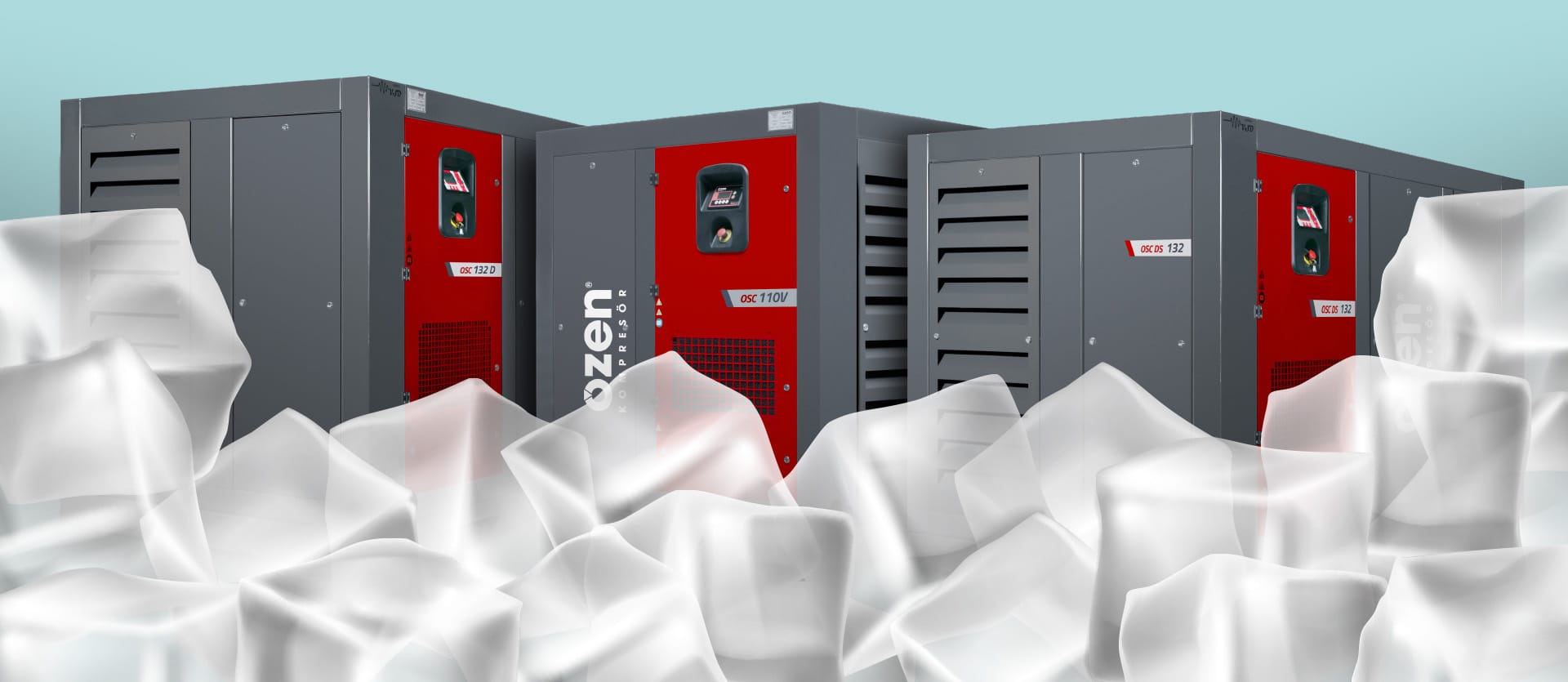Compressor Cooling System
5 November 2021, Friday

The working principle of the compressor systems used in many business segments is based on performing difficult mechanical movements by compressing the existing air and increasing its pressure. After the compression process, the air heats up and needs to be cooled. Therefore, the importance of the coolers for the compressor is very great. The heat transfer process of the cooling and air conditioning systems is carried out either with a single- or two-stage, depending on the compression principle of the compressor.

In chiller designs, the pressure’s loss being minimal is important in terms of energy efficiency. While compressed air is obtained through compression in compressors, 80 - 90% of the electrical energy used is turns into heat energy. If there is a process that uses electricity, gas or liquid fuel, the percentage of heat energy is likely to increase. This heat energy can be used for certain purposes such as feed water preheating, boiler combustion air by using various systems. The cooling mechanisms of the systems, which have many types such as screw, axial, centrifugal, piston compressors etc., are two types, water-cooled and air-cooled.
Open Systems Working with Water Cycle
In these systems, the cooling process is performed by connecting to an water source obtained externally. The water passes through the compressor and leaves the system as waste water by completing its temperature cooling function. When the temperature reaches the desired level, there will no need for a water source. Therefore, continuously checking the compressor with a thermometer matters. The water source supplied to the system can be any lake, sea or fresh water, as well as city water. However, if this system is to be used, it is required to pay attention to the cost calculations. In addition to the maintenance of the compressor, the inlet located in the cooling system needs to be filtered due to impurities and particles in the spring water. These filters’ being replaceable prevents the problem of filter obstruction, such as lime and dirt, which will hinder the fulfilment of the cooling function. As soon as the filter is cleaned or replaced, the cooling system continues to operate with its former efficiency and the system will be renewed.
Sealed Systems Working with Water Cycle
These systems are also called closed systems. The same water circulates in the system and cools the compressor by transferring the heat energy. There should be another system that receives the heat energy carried by the water. This system is generally an external water circuit or heat exchanger. In closed system water cooled by external waters, cooling grids with components such as various pipes and cooling blades take in charge. The air coming from the environment is sent to the pipe and blade system with one or more fans. The water is cooled up to 5°C above the cooling water. If air is used as the heat exchanger, the cooling water system is filled with pure and demineralised water. An antifreeze such as glycol should be added and the water flow in the compressor system should be recalculated. The thermal capacity and liquidity of the water differentiate after addition of the glycol. And, this affects the efficiency to be obtained. Therefore, repeating the fluid calculations matters. Before filling the system for the first time, it is required to clean it completely. In closed water systems, solid materials are used so that the cooling water does not cause corrosion in the system.
Air-Cooled Systems
In most of the newer models, cooling sections of the compressor units are air-cooled. With the forced ventilation system within the air compressor section, nearly 100% of the heat energy produced by the engine is transferred and the cooling process is performed. Especially the screw compressor systems are very advantageous in terms of the increasing costs such as start-up and operation. If there is a staged compressor capacity control in the cooling systems, the efficiency is at the highest level. Electronic expansion valves are generally used to automate condenser and cooler fluid flow control. Users using the system have the advantage of imaging all information about the system from one screen. A structure is devised that involves screw compressors with easy installation, maintenance and repair systems and an air-cooling system as well as an integrated protection system setup. The displacement process of air can be easily changed by adjusting the rotation speed that drives the engine of the system.
